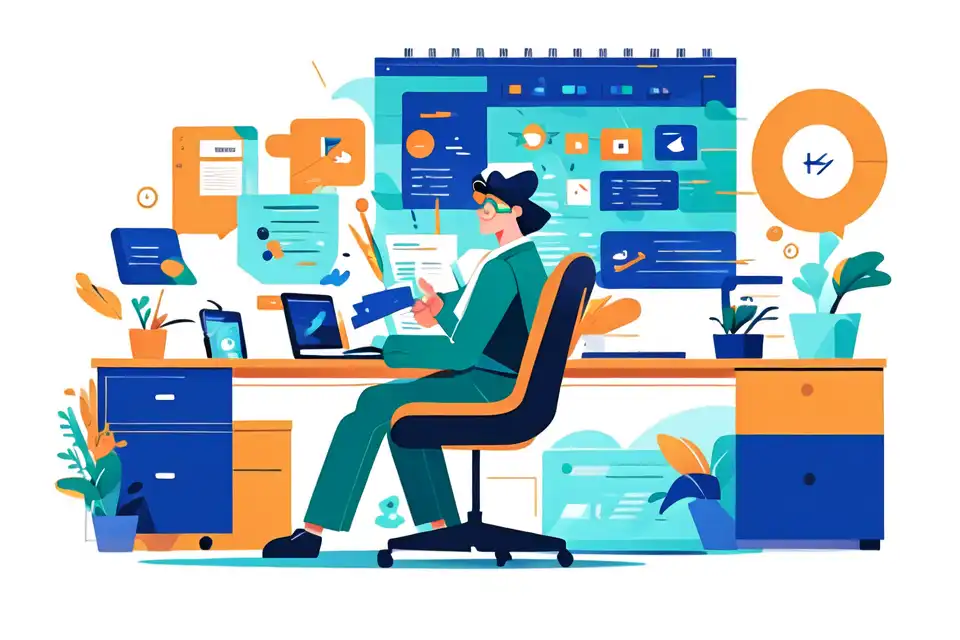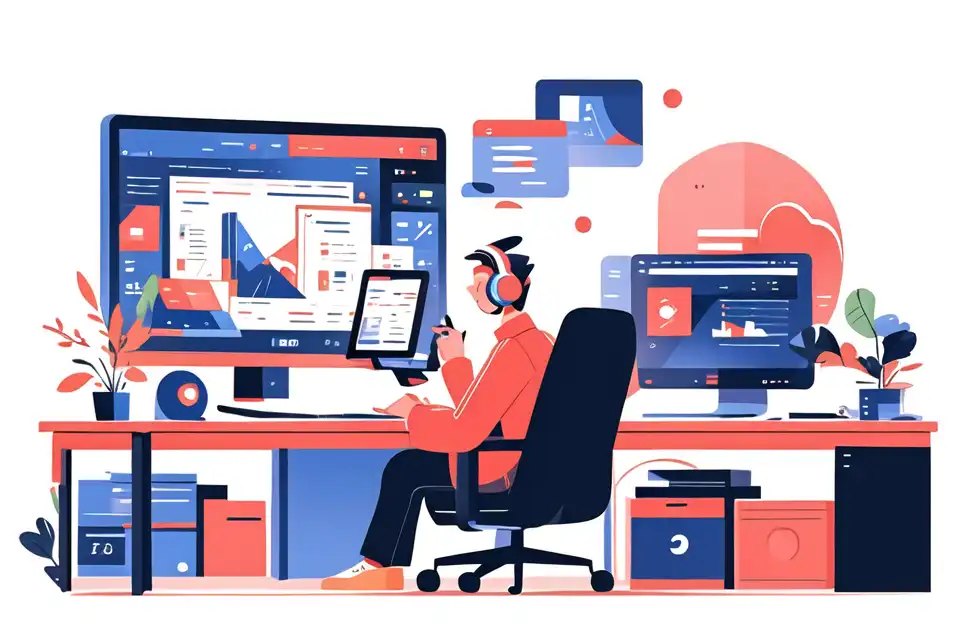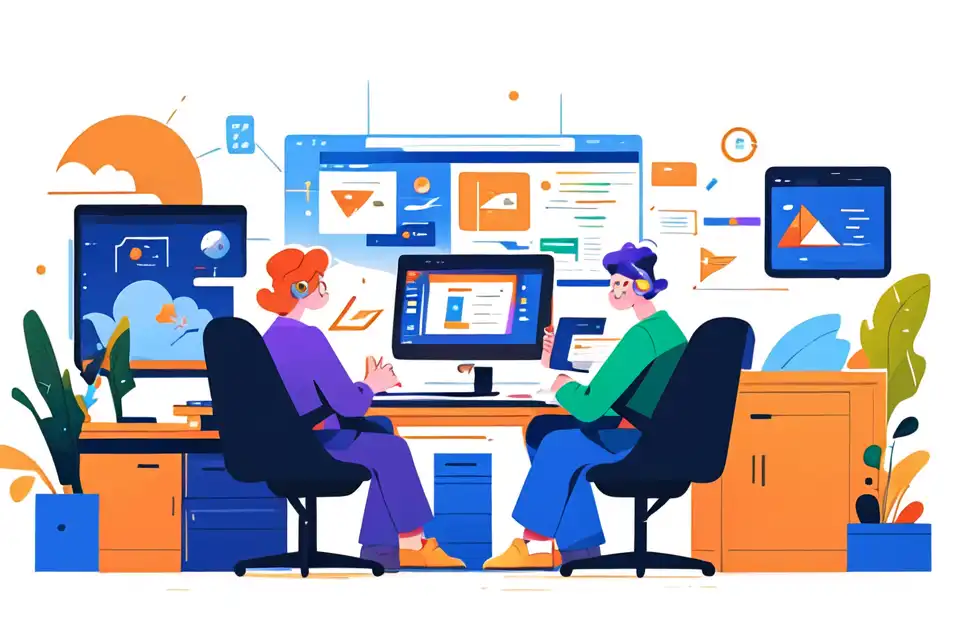Adaptive Project Framework Apf for Design and User Experience Teams
Explore adaptive project framework apf for design and user experience teams, ensuring efficiency and successful project management outcomes.
Try Lark for Free
In this ever-evolving digital landscape, the importance of employing efficient project management methodologies cannot be overstated, especially for design and user experience (UX) teams. One such methodology that has been gaining traction due to its flexibility and effectiveness is the Adaptive Project Framework (APF).
Leverage Lark for project management within your team.
Understanding adaptive project framework (apf)
The Adaptive Project Framework (APF) is a project management approach that prioritizes flexibility and adaptability, allowing teams to respond to inevitable changes throughout the project lifecycle. It emphasizes collaboration, iteration, and continuous improvement, making it particularly well-suited for the dynamic nature of design and UX projects. Unlike traditional project management methodologies, APF acknowledges and embraces the unpredictable nature of design processes, offering a structured yet adaptable framework.
Benefits of Adaptive Project Framework (APF) for Design and User Experience Teams
Enhancing Team Collaboration and Creativity
APF encourages cross-functional collaboration and frequent feedback loops, enabling design and UX teams to work in tandem with stakeholders and other departments. This collaborative environment fosters creativity and innovation, as team members are empowered to contribute ideas and suggestions at every stage of the project. By involving stakeholders and users in the iterative design process, APF ensures that the final product aligns with the end users' needs and expectations.
Iterative Prototyping and Testing
One of the key advantages of APF is its support for iterative prototyping and user testing. Design and UX teams can rapidly create prototypes and gather user feedback, allowing for quick iterations and refinements. This iterative approach reduces the risk of developing a final product that fails to meet user expectations, ultimately leading to more user-centric and effective design solutions.
Flexibility in Adapting to Changing Requirements
In the realm of design and user experience, project requirements are prone to change as new insights emerge and user preferences evolve. APF's adaptive nature enables teams to pivot and incorporate new requirements seamlessly, avoiding the constraints often associated with rigid project plans. This flexibility ensures that design projects remain aligned with the latest market trends and user needs, ultimately resulting in more relevant and impactful deliverables.
Empowering Continuous Improvement and Learning
APF promotes a culture of continuous learning and improvement within design and UX teams. By embracing change and harnessing feedback, team members are encouraged to reflect on their processes and outcomes, leading to ongoing enhancements and refinements. This commitment to continuous improvement not only benefits individual projects but also cultivates a culture of adaptability and growth within the organization.
Steps to implement adaptive project framework (apf) for design and user experience teams
Step 1: Project Discovery and Stakeholder Alignment
- Conduct a Project Discovery Workshop: Gather key stakeholders, including design and UX team members, to identify project objectives, user needs, and success criteria.
- Align on Project Vision and Goals: Ensure that all stakeholders have a shared understanding of the project's purpose and desired outcomes.
Step 2: Agile Planning and Iterative Roadmapping
- Agile Roadmapping: Break down the project into iterative phases, considering design sprints and research cycles to accommodate user-focused iterations.
- Iteration Planning: Collaboratively plan and prioritize design and UX iterations, incorporating flexibility to adapt based on user feedback and changing requirements.
Step 3: Iterative Design and Prototyping
- Collaborative Design Workshops: Engage cross-functional teams in design thinking workshops to ideate and co-create design solutions.
- Rapid Prototyping and User Testing: Develop iterative prototypes and gather user feedback to inform continuous design refinements.
Step 4: Continuous Feedback and Iteration
- Regular Feedback Loops: Establish mechanisms for gathering and incorporating feedback from stakeholders, users, and team members throughout the project.
- Real-Time Iteration: Utilize agile principles to adapt and iterate on design solutions based on continuous feedback and emerging insights.
Step 5: Measurement and Reflection
- Performance Assessment: Measure the impact of design and UX solutions against predefined success criteria and user-centric metrics.
- Post-Project Reflection: Facilitate a retrospective session to capture lessons learned and identify areas for improvement in future projects.
Common pitfalls and how to avoid them in design and user experience teams
Pitfall 1: Overreliance on Initial Project Plans
- Avoidance Strategy: Embrace the iterative nature of APF and prioritize adaptability over rigid adherence to initial project plans. Encourage teams to remain open to adjusting course based on new information and evolving user insights.
Pitfall 2: Insufficient Stakeholder Involvement
- Mitigation Approach: Actively engage stakeholders throughout the project, seeking their input and feedback at key milestones to ensure alignment and buy-in.
Pitfall 3: Resistance to Iterative Approaches
- Resolution Method: Foster a culture of experimentation and learning, emphasizing the value of rapid iterations and user feedback in refining design solutions. Promote the benefits of agility in addressing evolving requirements and user needs.
Learn more about Lark Project Management for Teams
Do's and dont's
The following table outlines essential practices and potential pitfalls when implementing the Adaptive Project Framework within design and UX teams:
| Do's | Dont's |
|---|---|
| Embrace iterative prototyping | Rigidly adhere to initial project plans |
| Foster cross-functional collaboration | Overlook stakeholder and user feedback |
| Prioritize adaptability and flexibility | Resist changes to design directions and requirements |
| Engage in continuous learning and improvement | Disregard post-project reflection and learning sessions |
Examples
Design iteration for mobile application
Design iteration for mobile application
- In a design project for a mobile application, the design team utilized APF to conduct iterative prototyping and user testing. By rapidly iterating on design concepts based on user feedback, they were able to refine the user interface and interaction patterns, resulting in a highly intuitive and user-centric mobile app.
User-centric website redesign
User-centric website redesign
- A UX team embarked on a website redesign project and applied APF principles to collaborate with stakeholders and iteratively test new design iterations with end users. This approach resulted in a redesigned website that not only met the organization's goals but also resonated with the needs and preferences of its target audience.
Agile product development
Agile product development
- A cross-functional design and development team adopted APF to guide the creation of a new digital product. By embracing agility and continuous feedback, they successfully navigated evolving project requirements and delivered a product that seamlessly aligned with user expectations and market trends.
Learn more about Lark Project Management for Teams
Leverage Lark for project management within your team.








